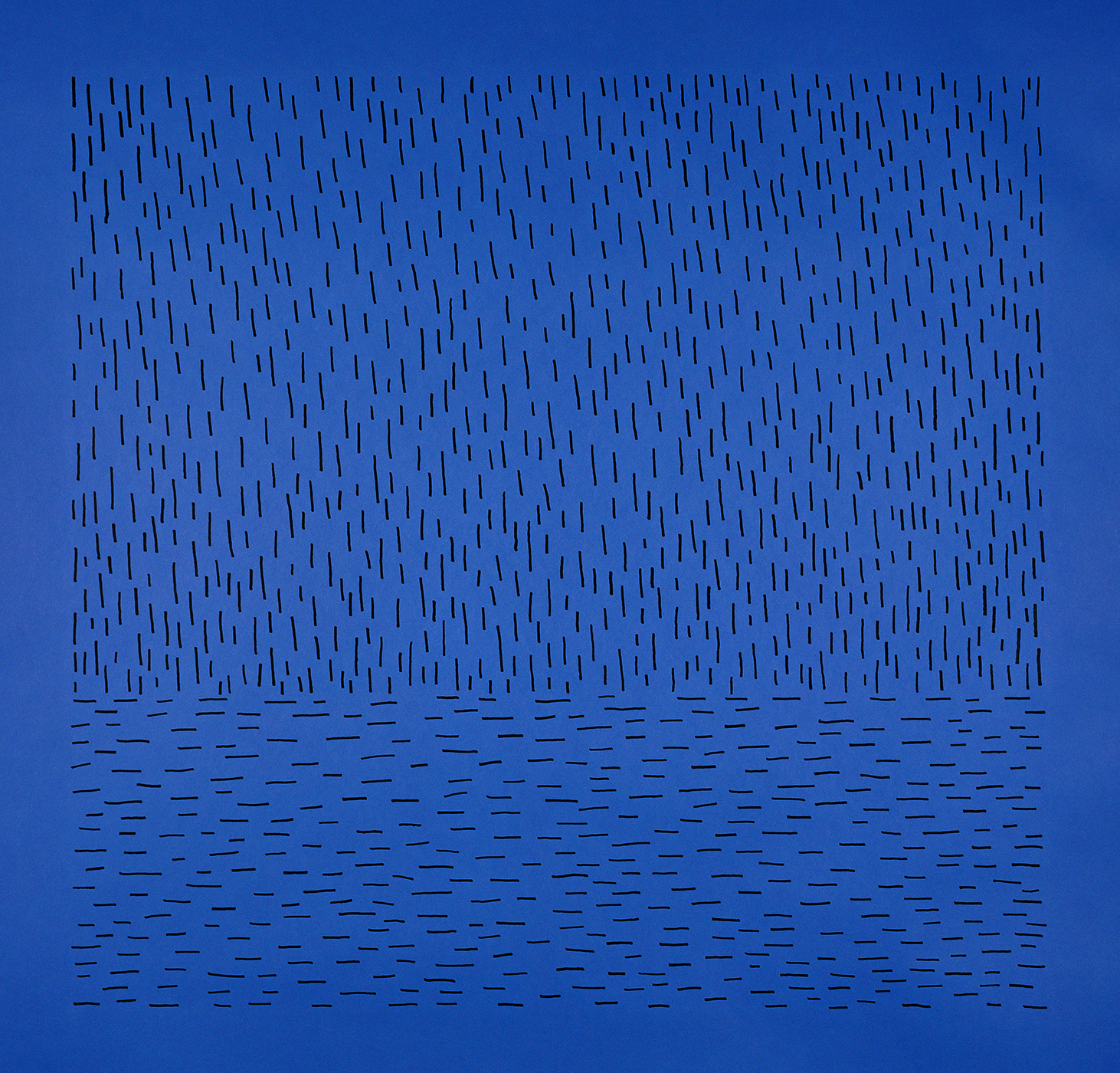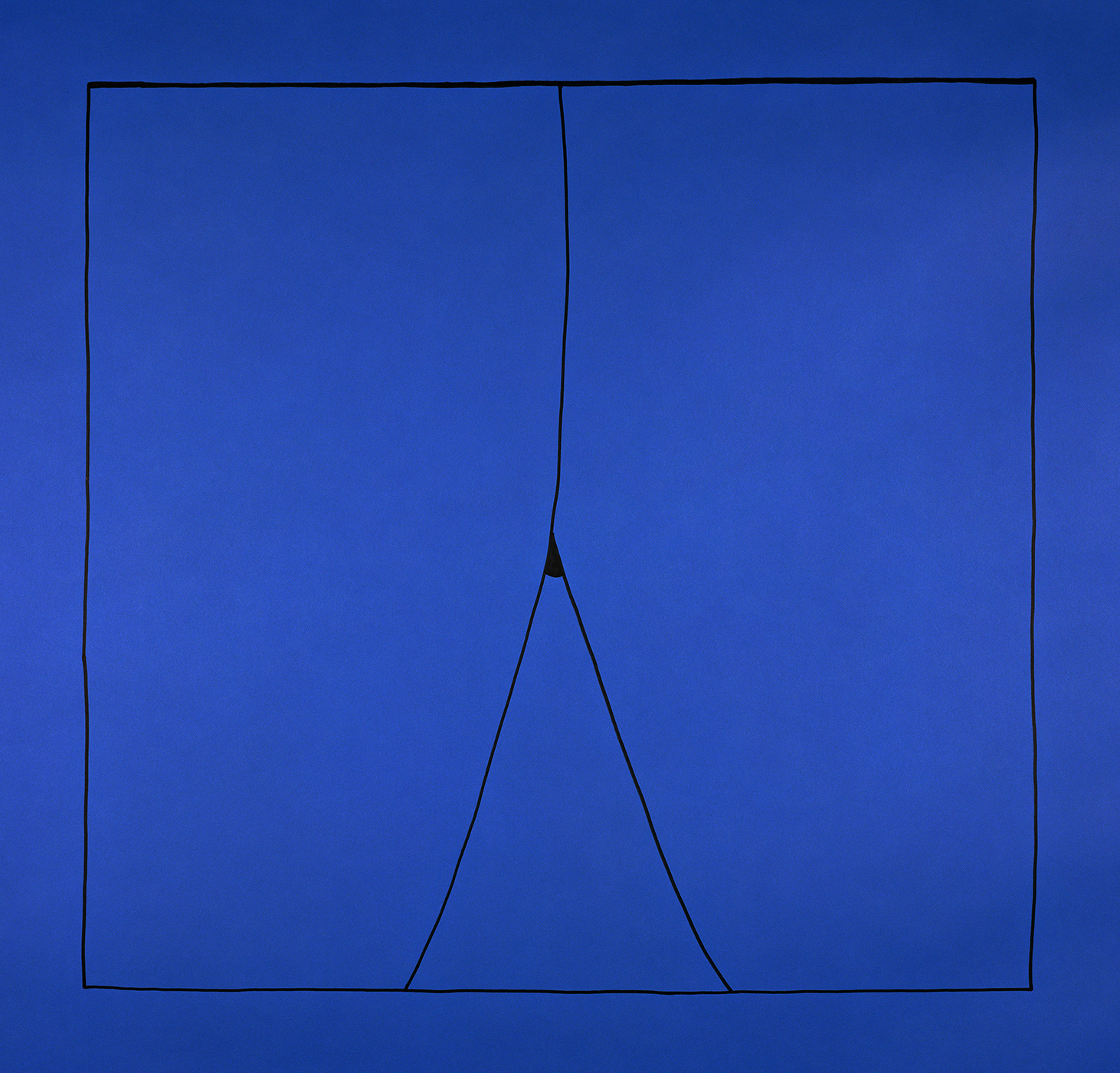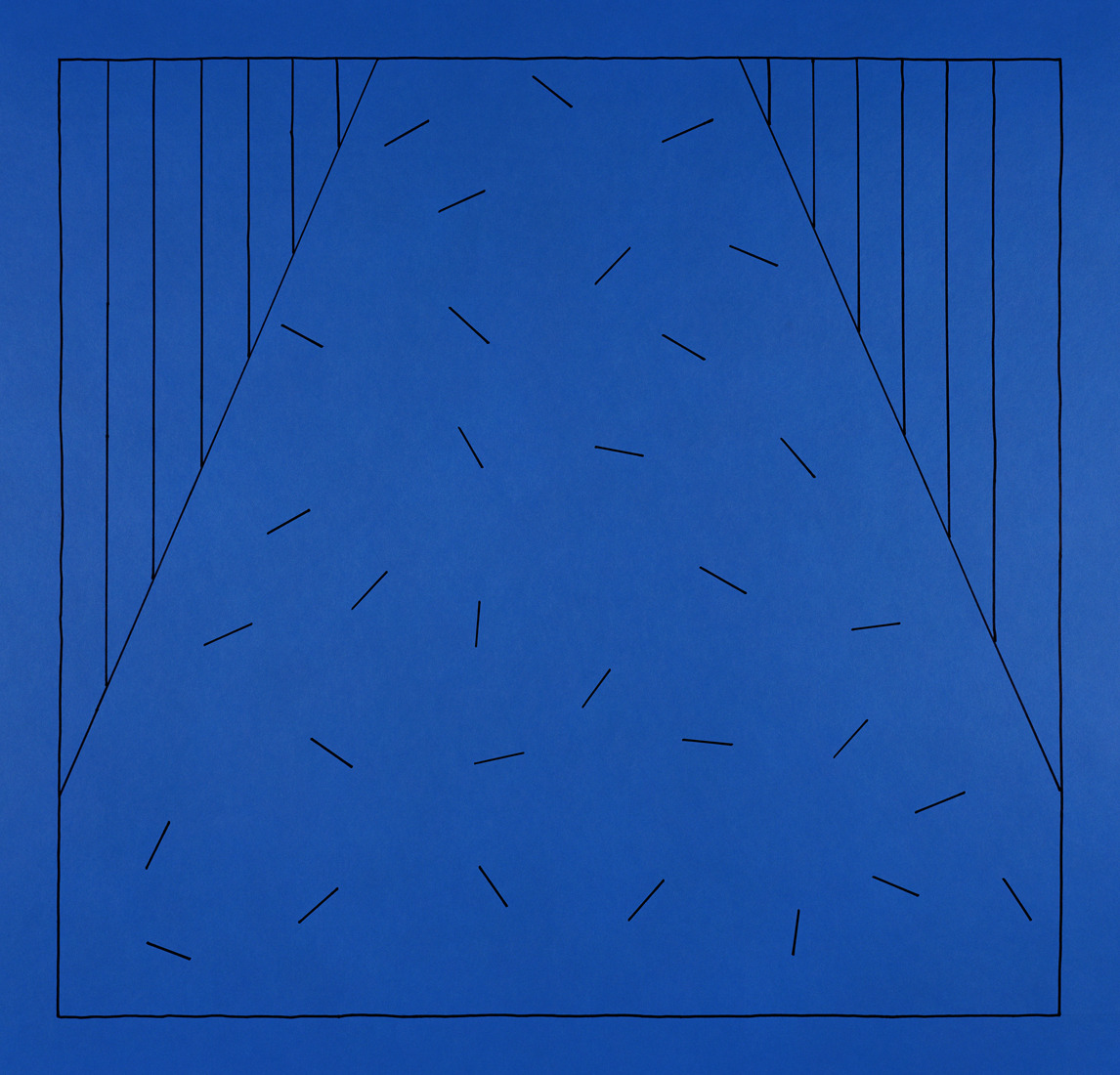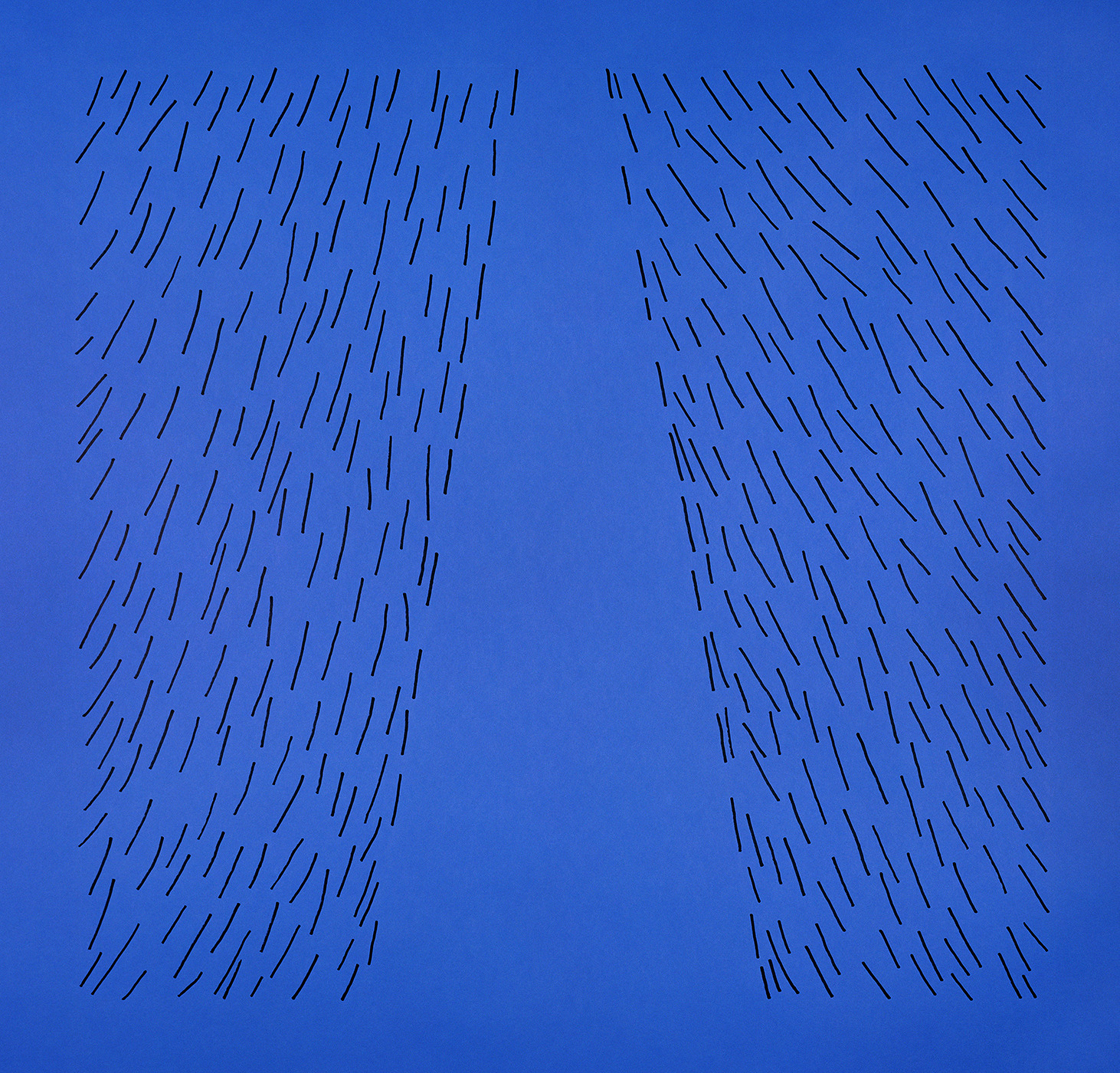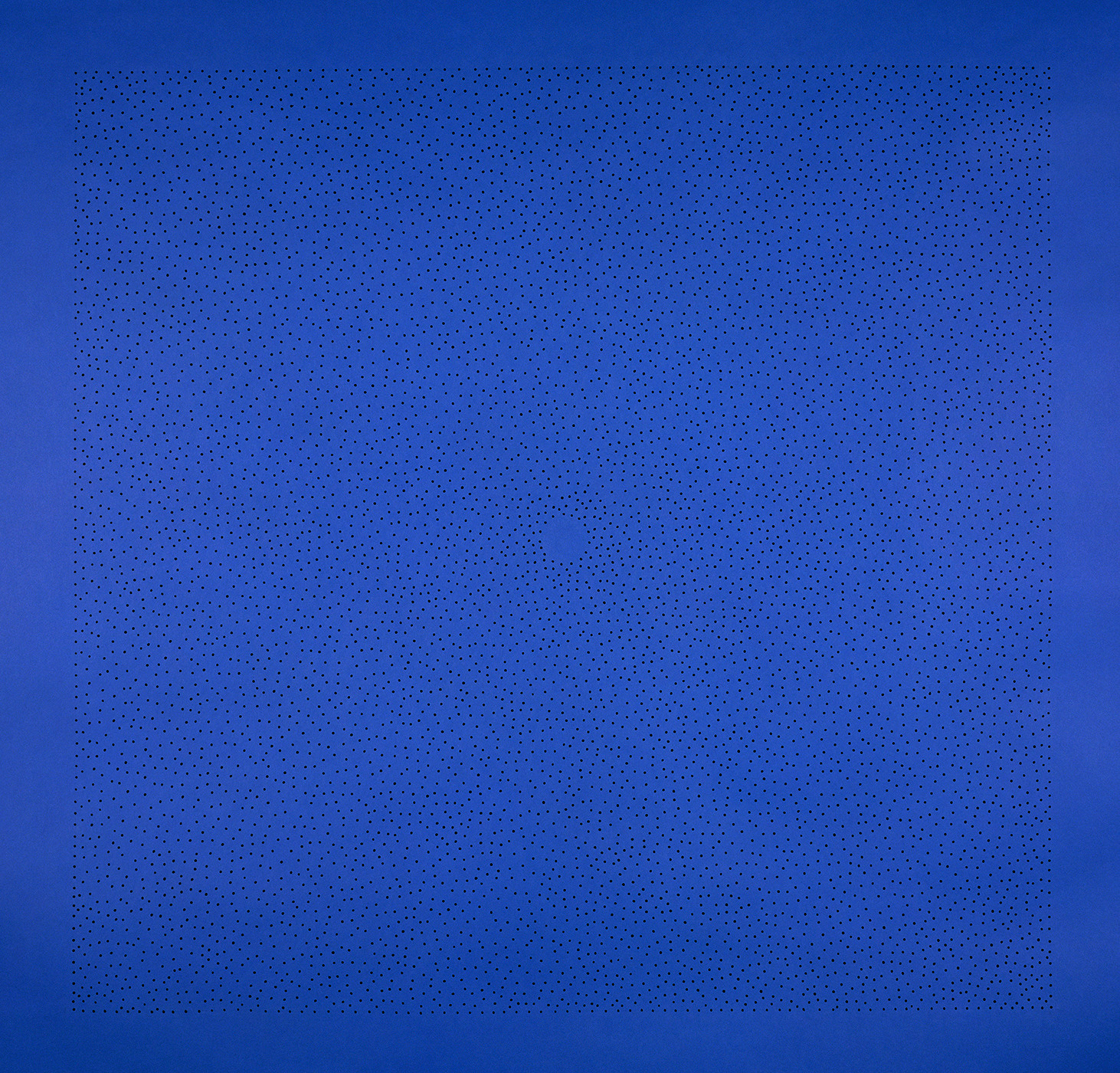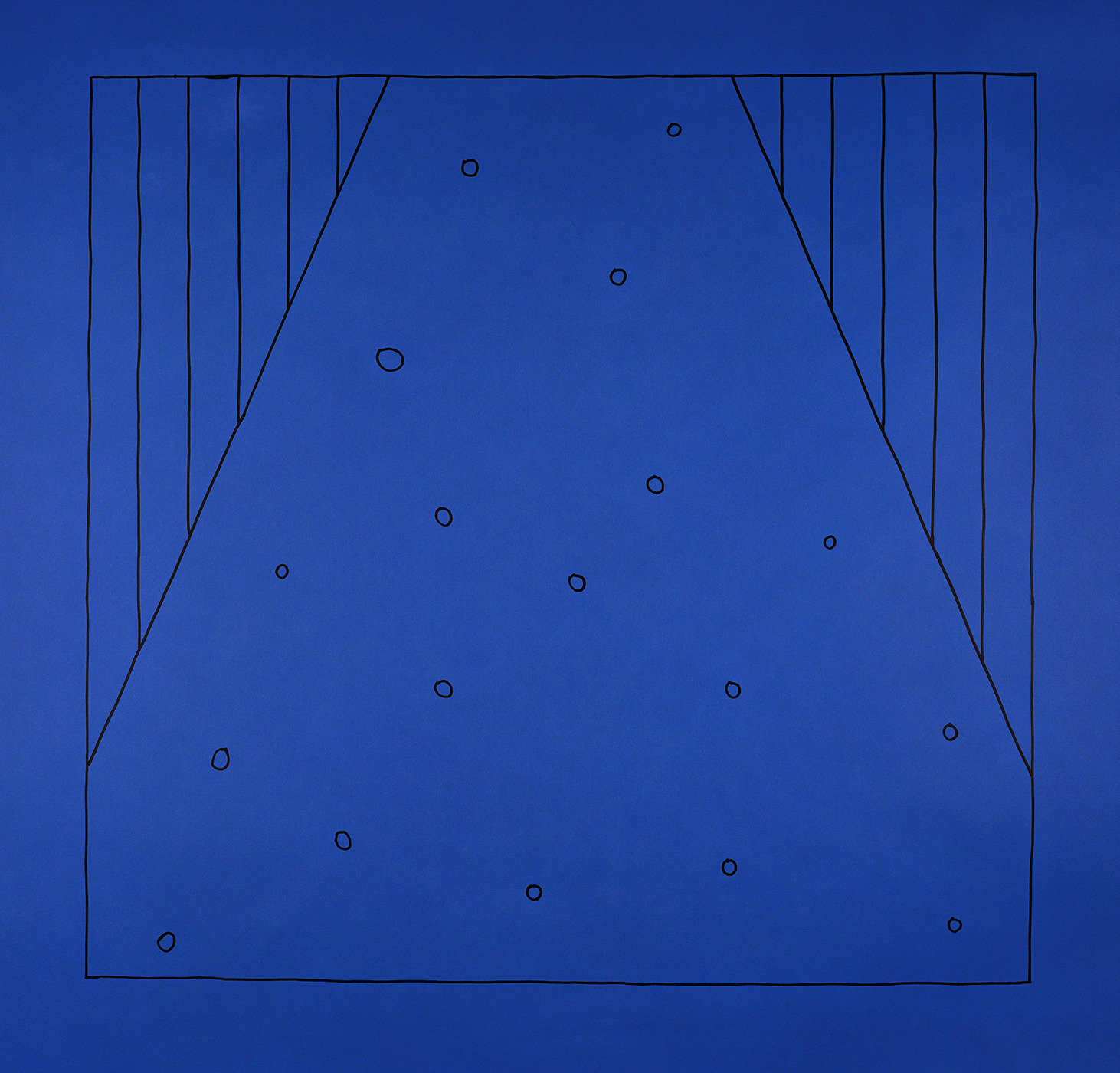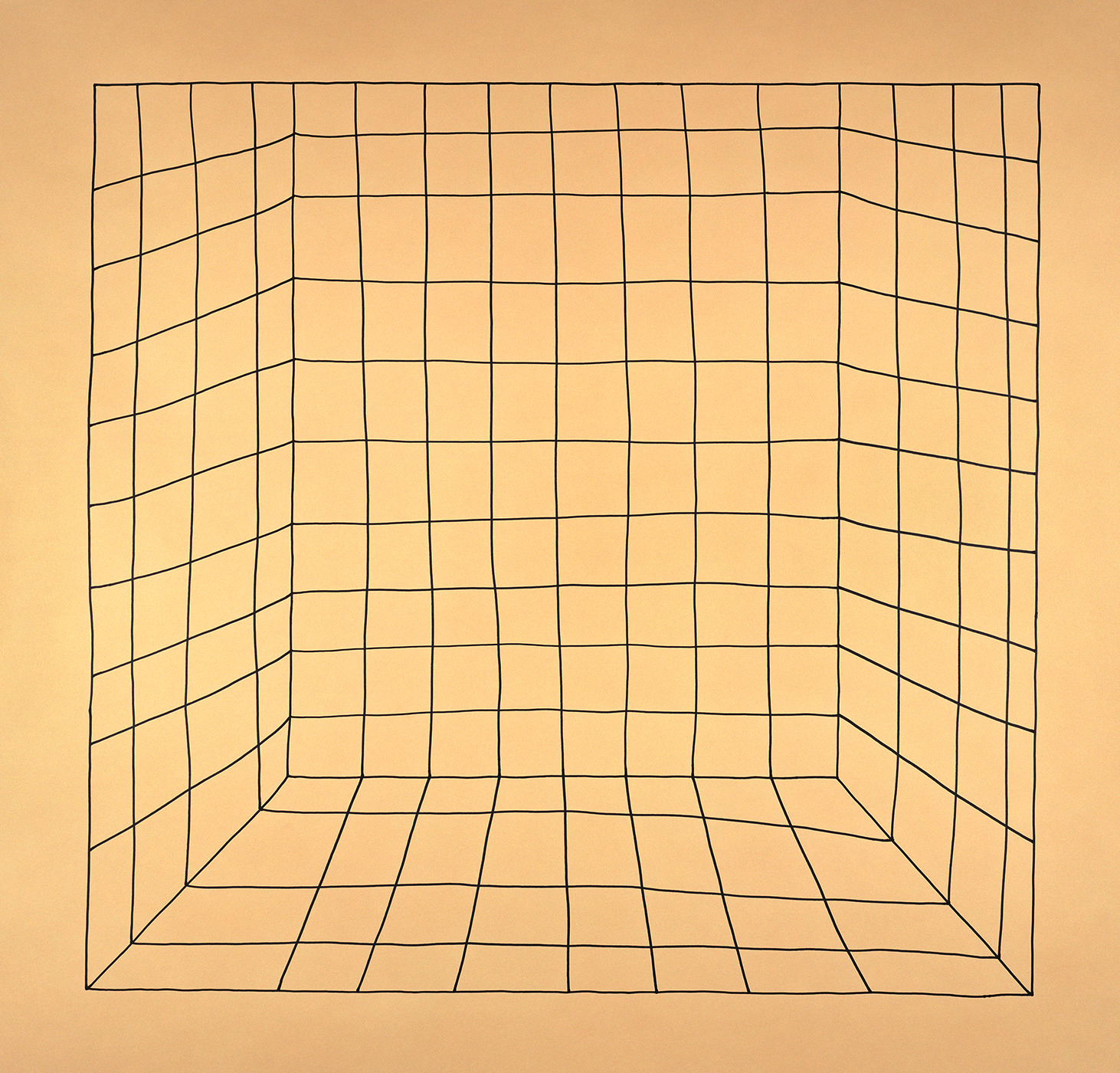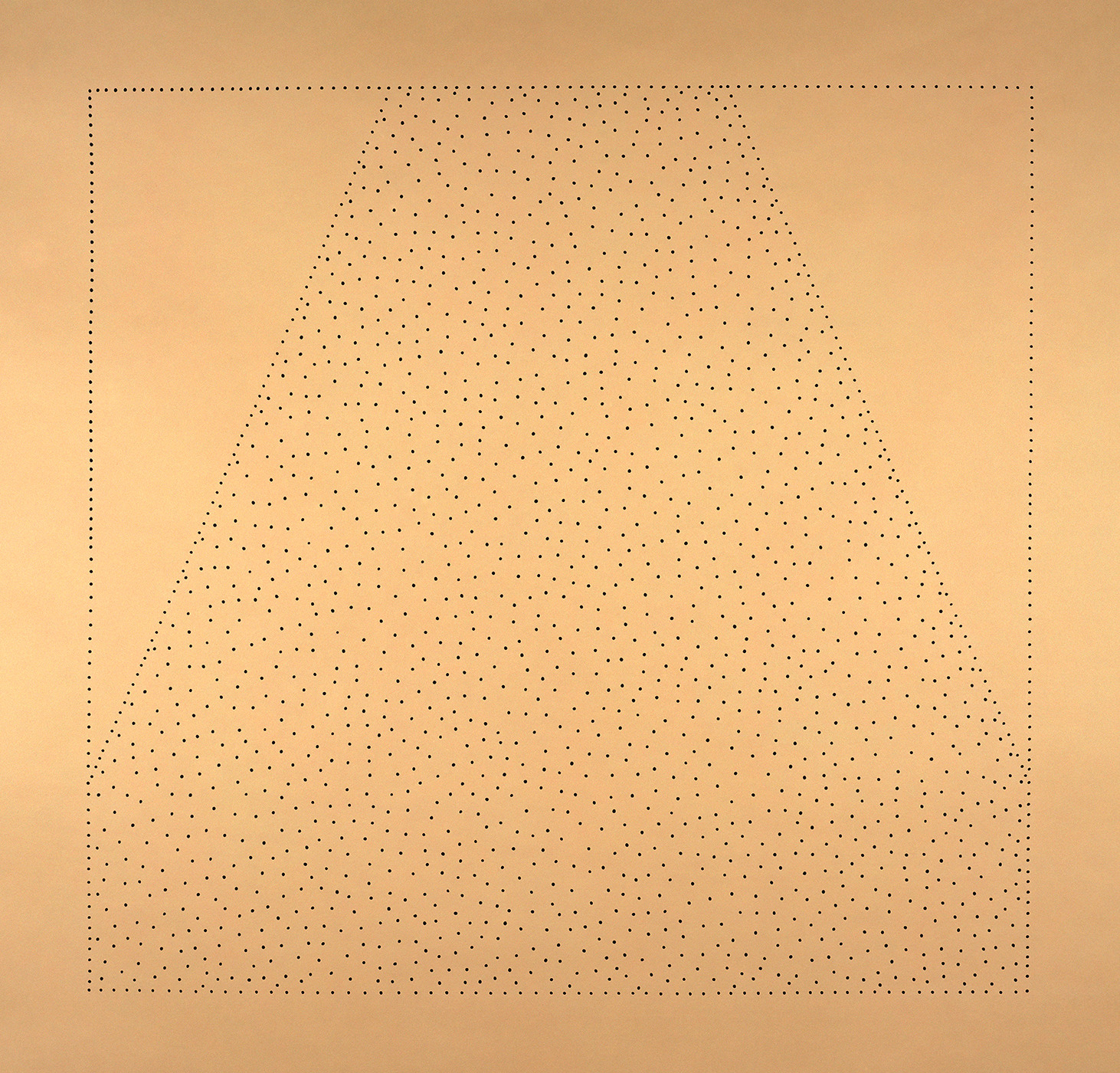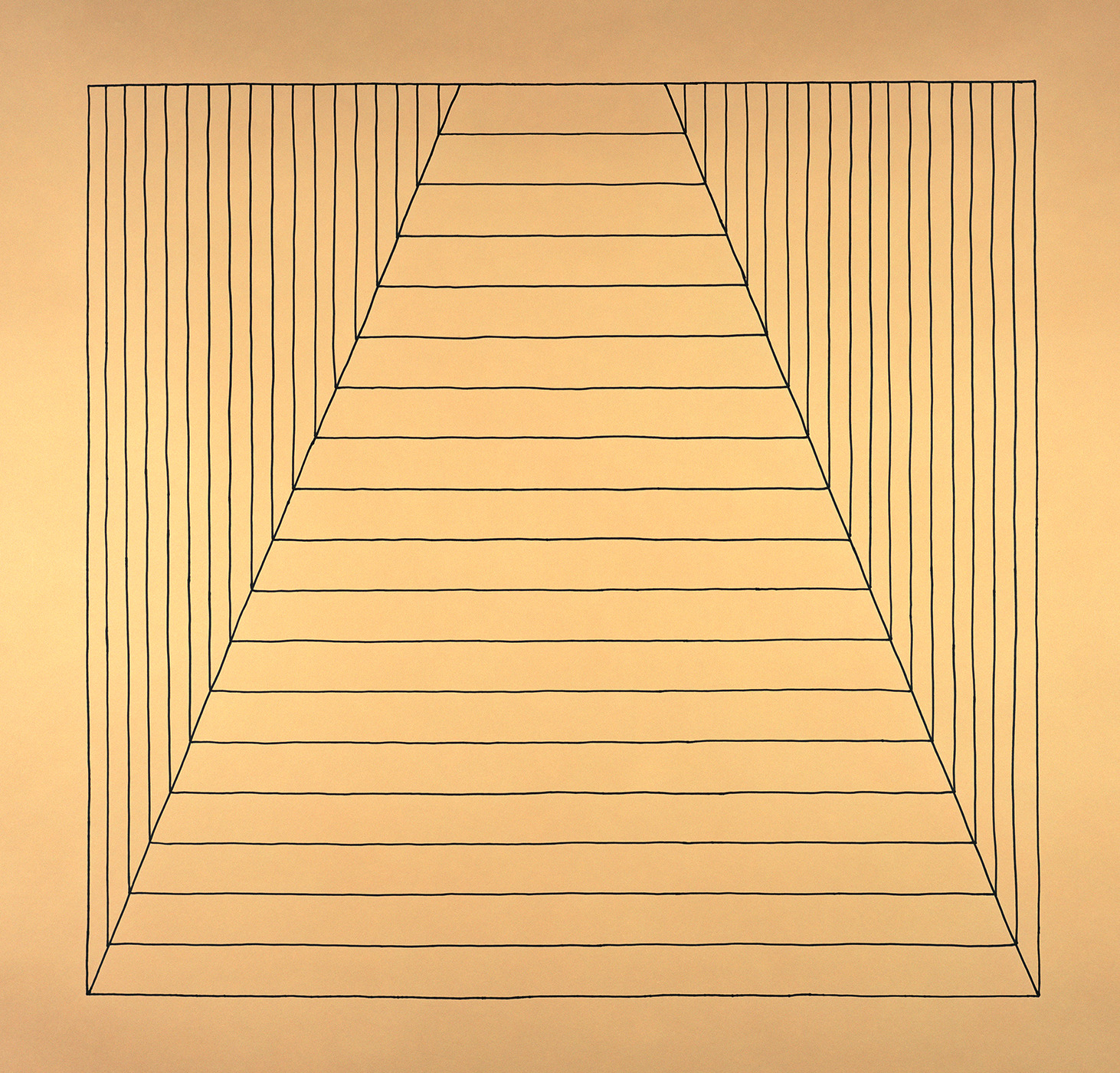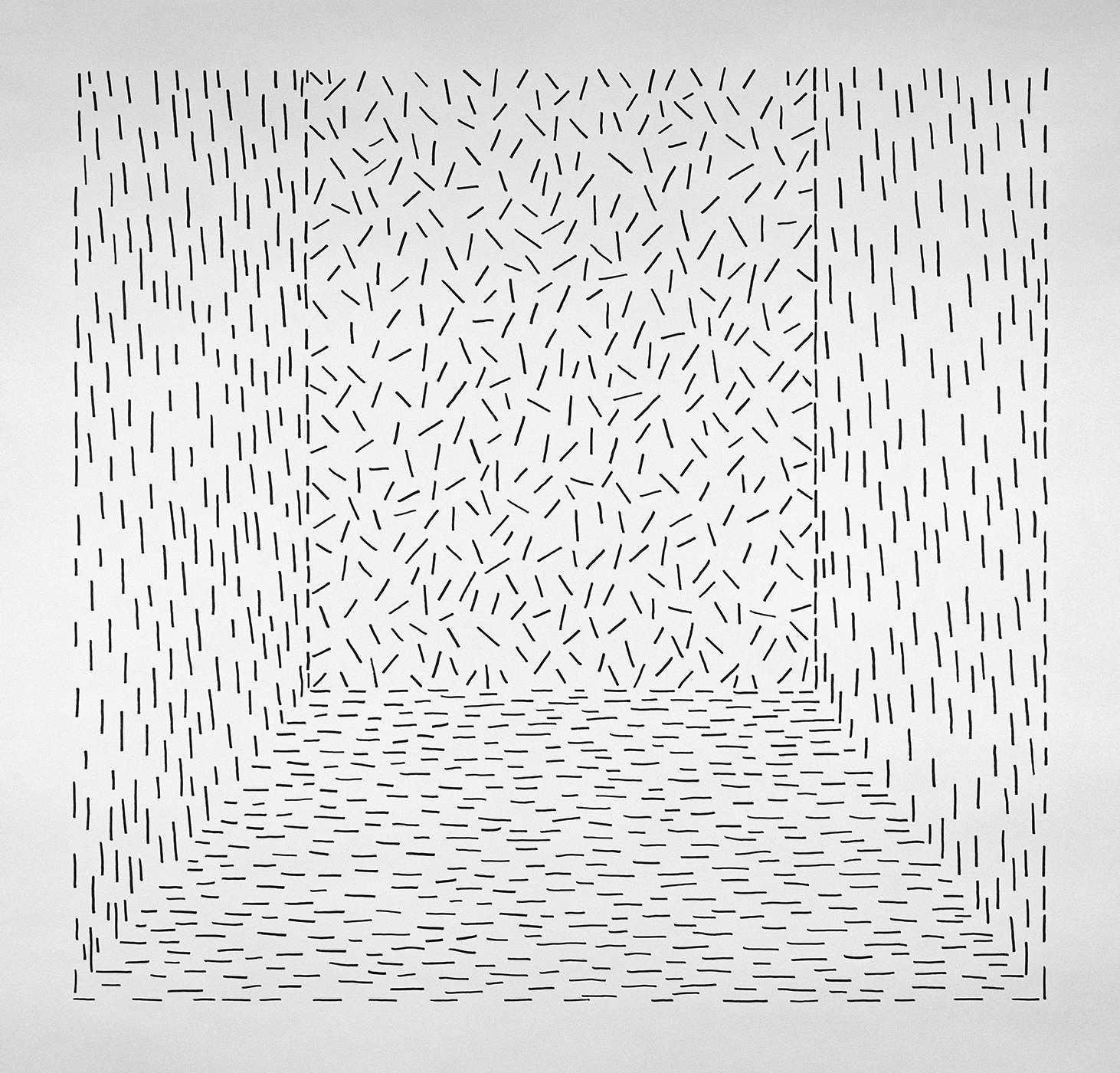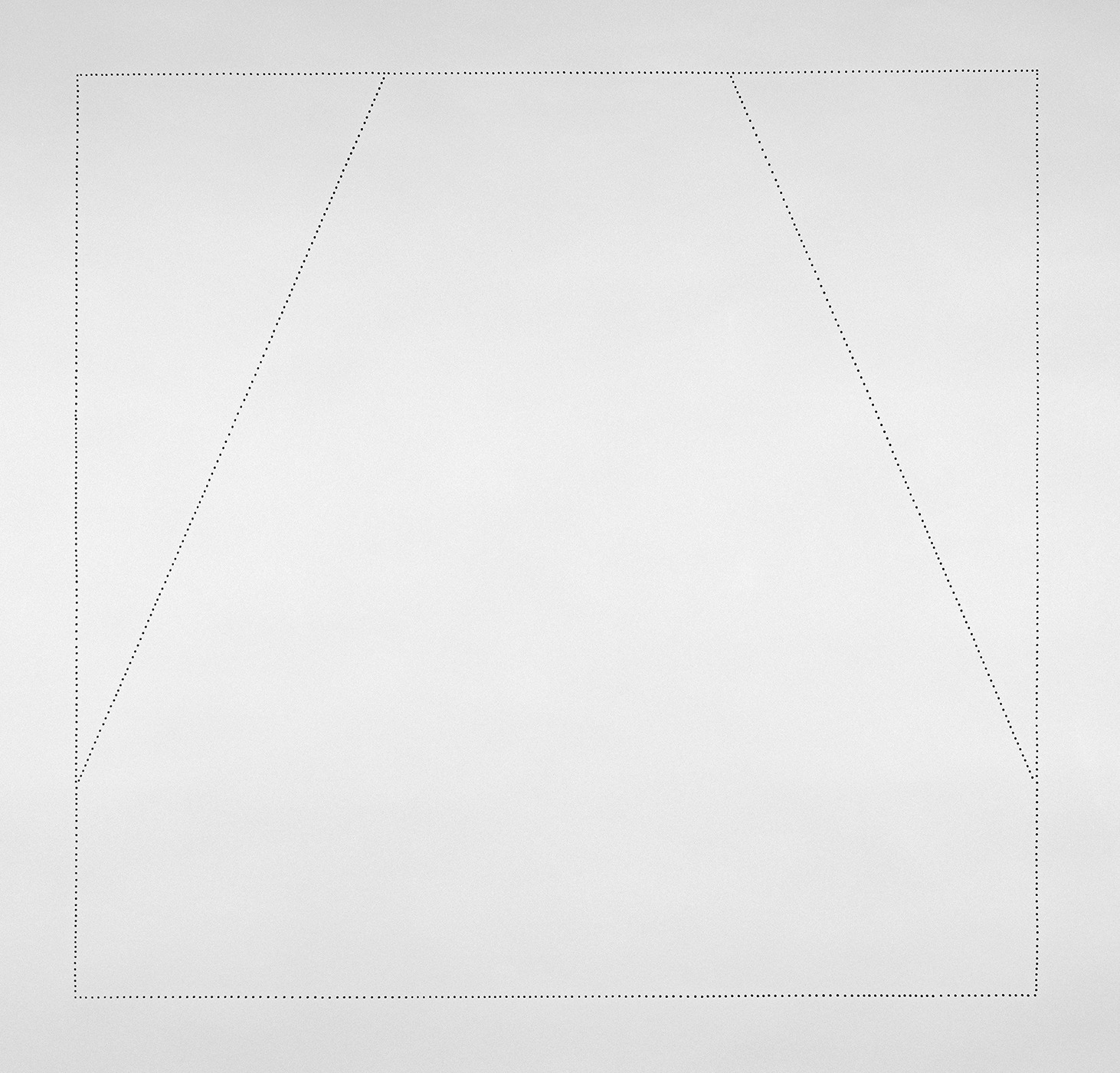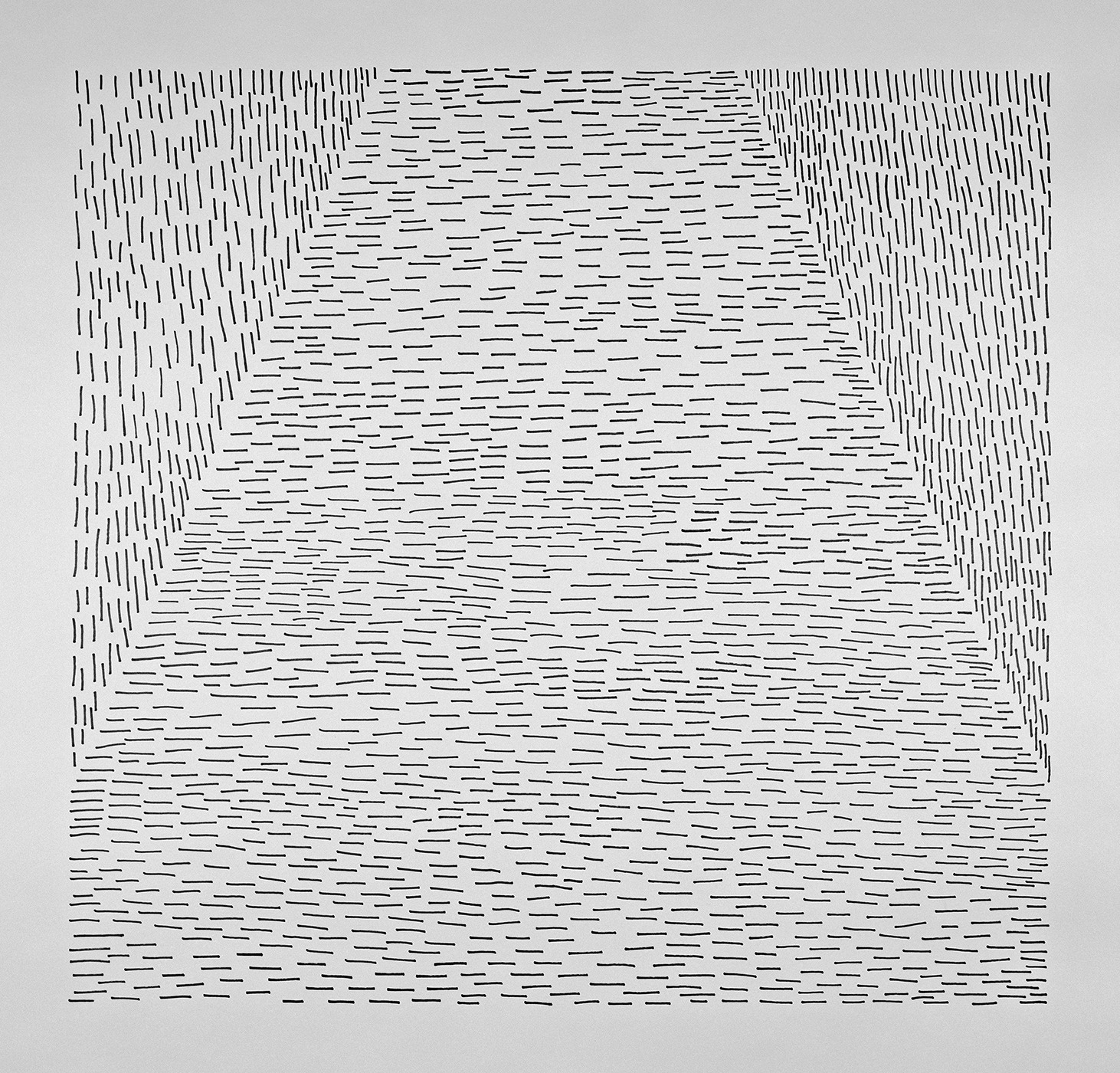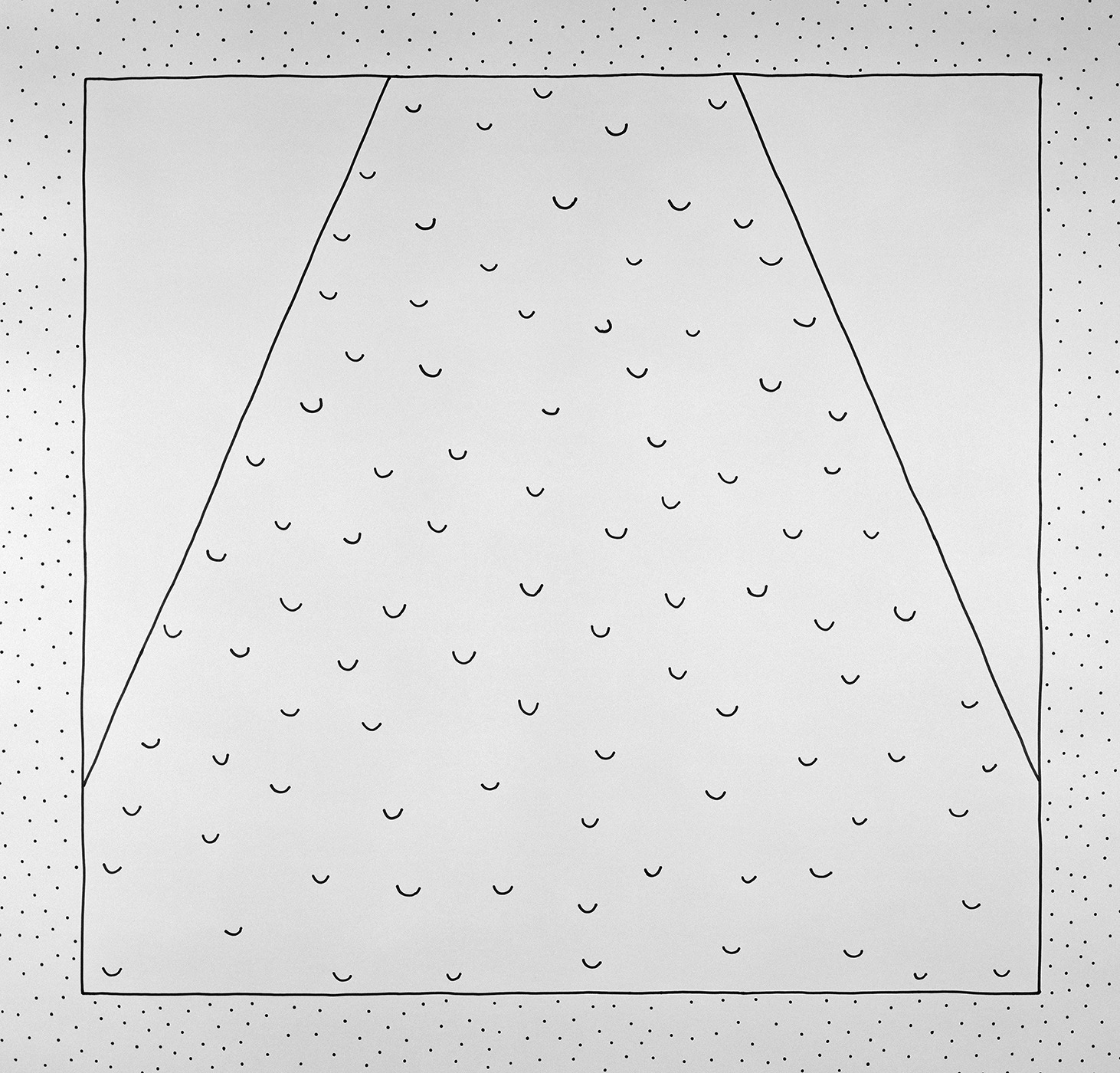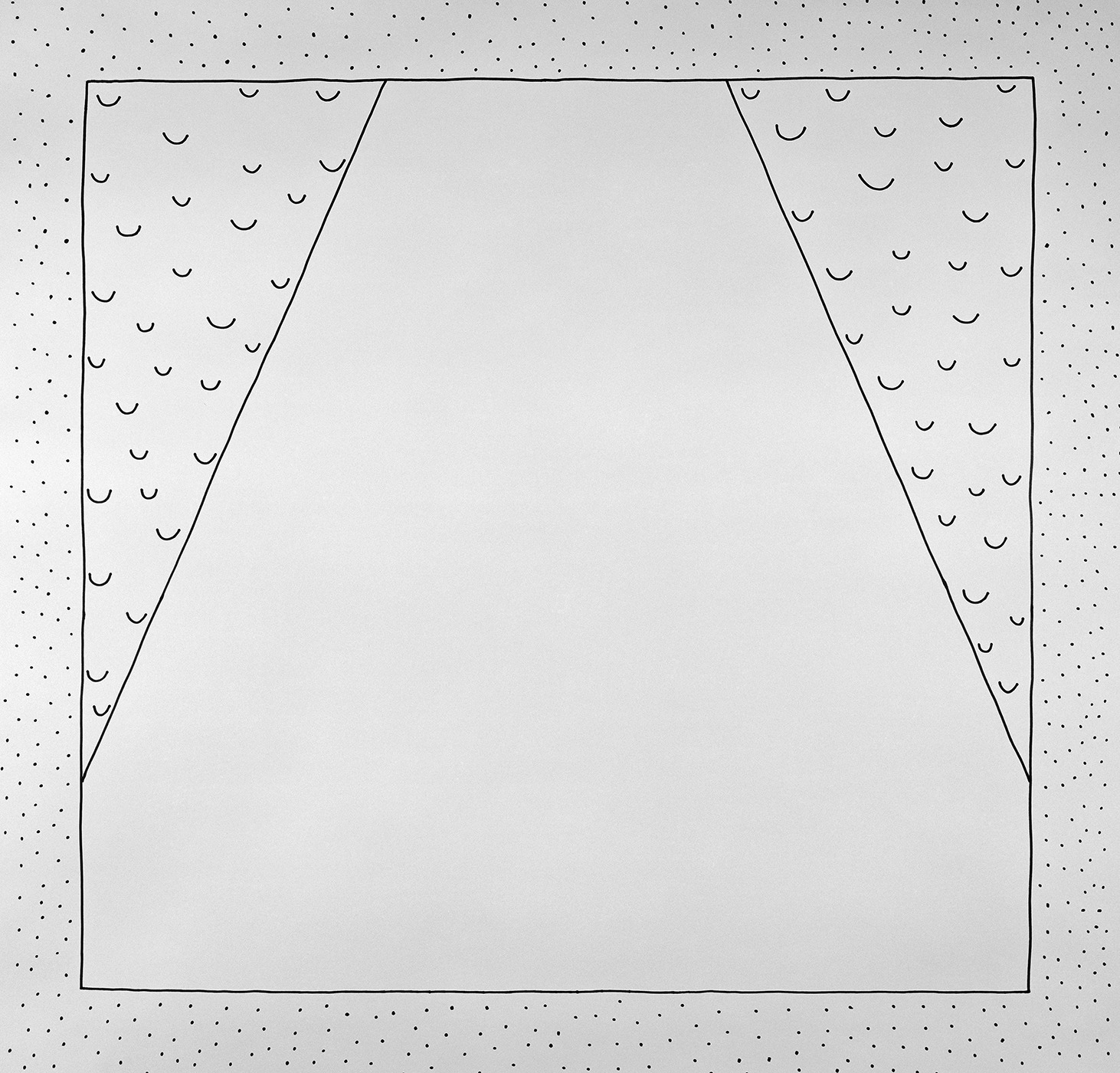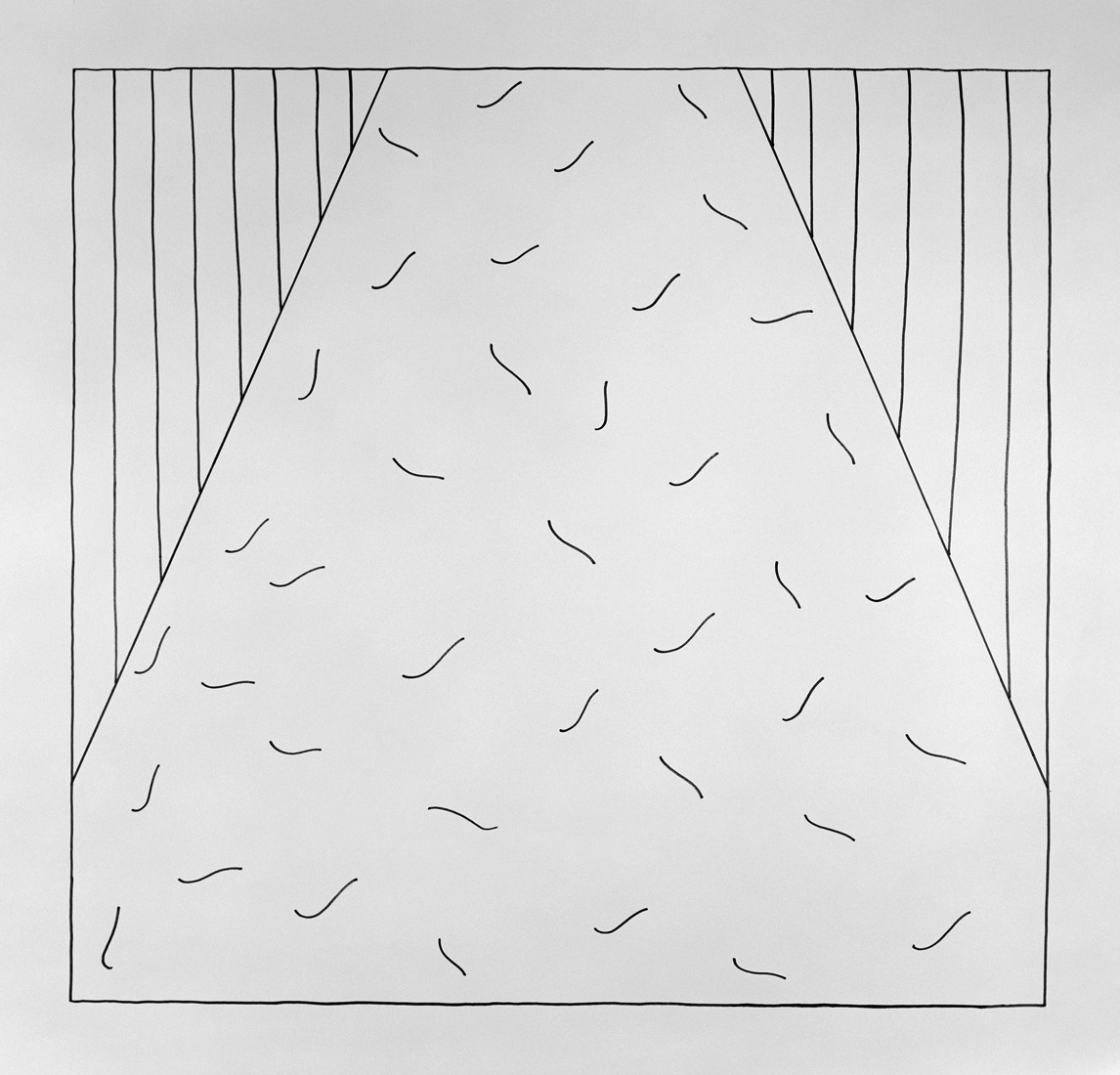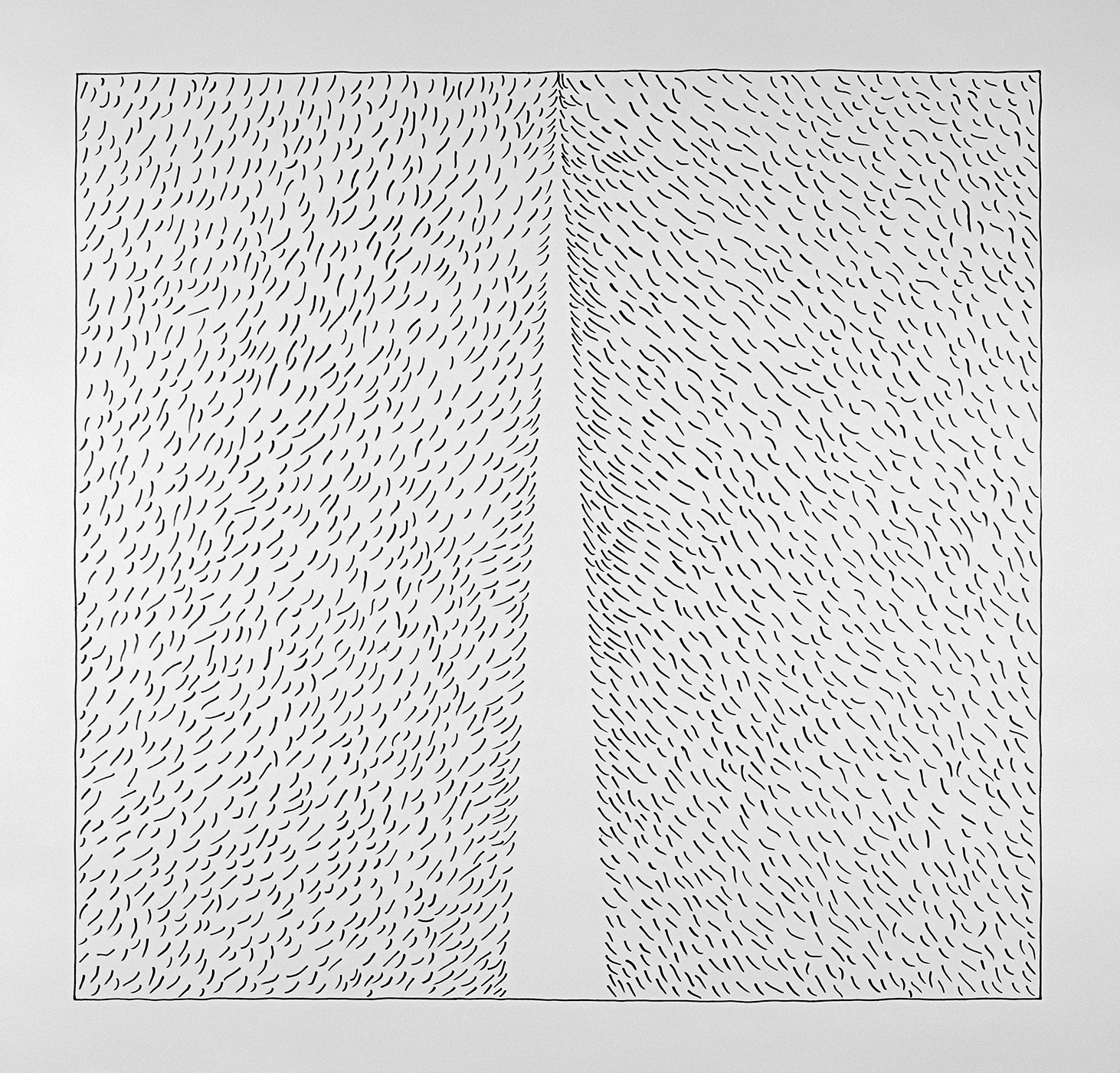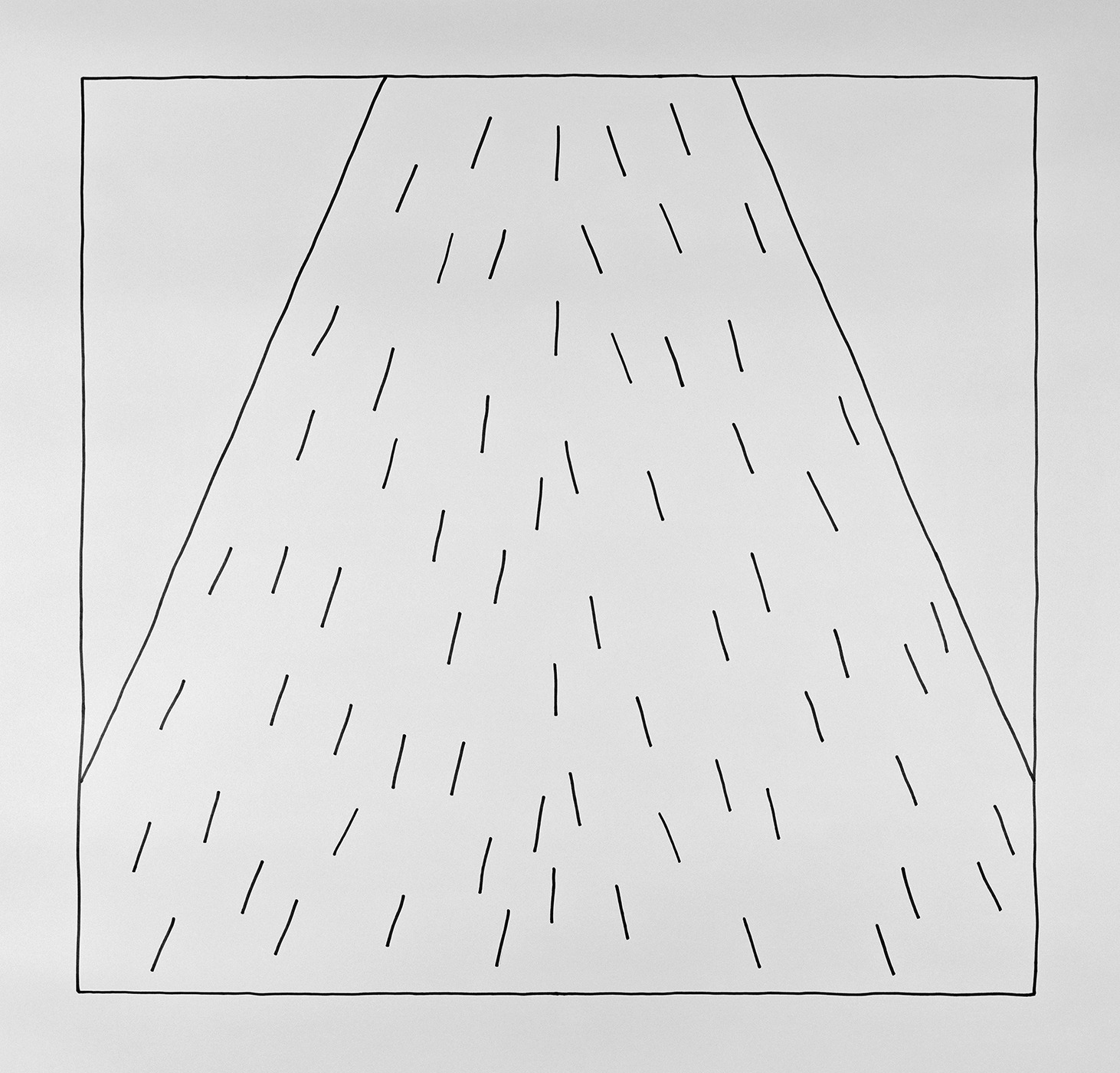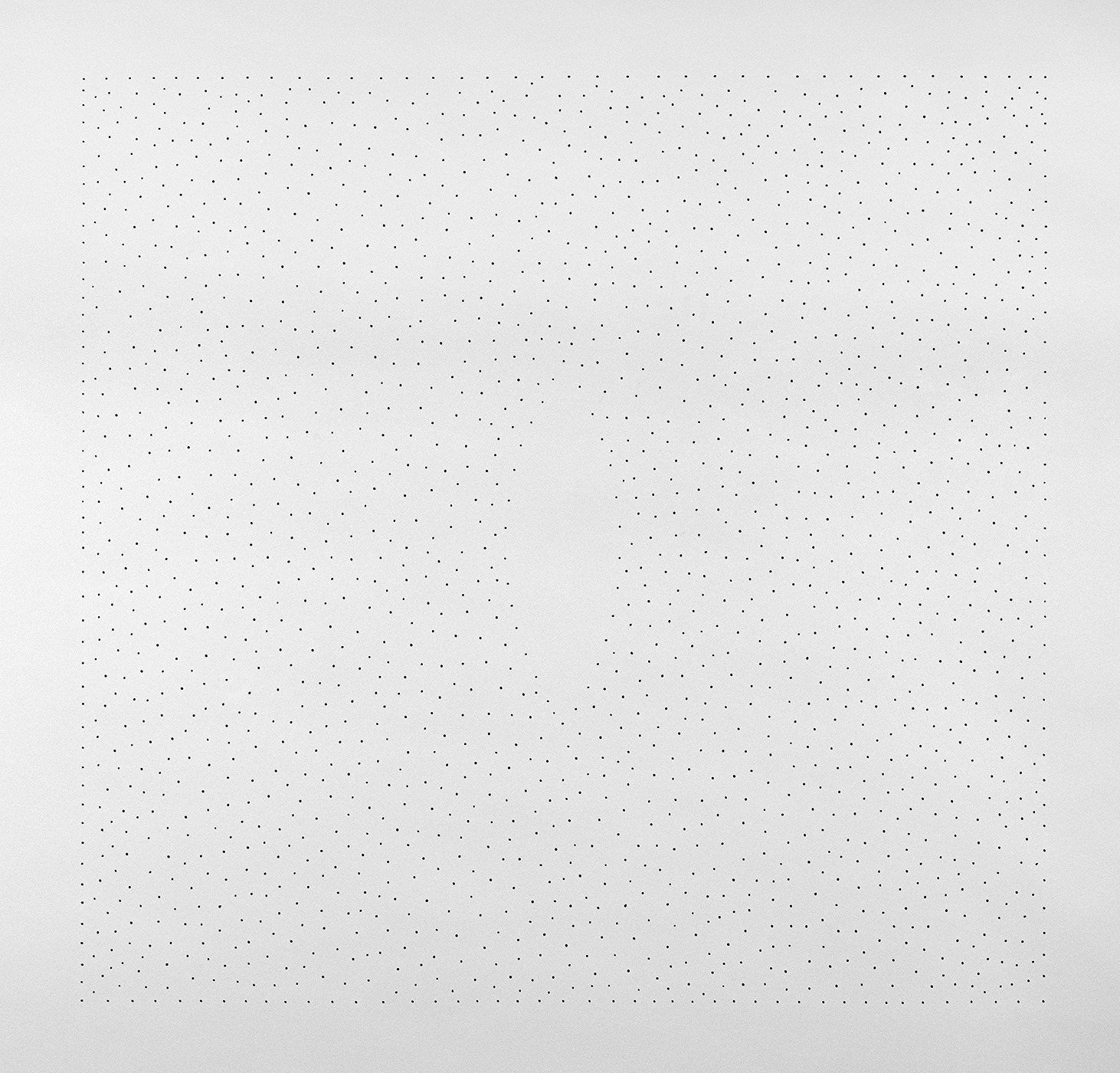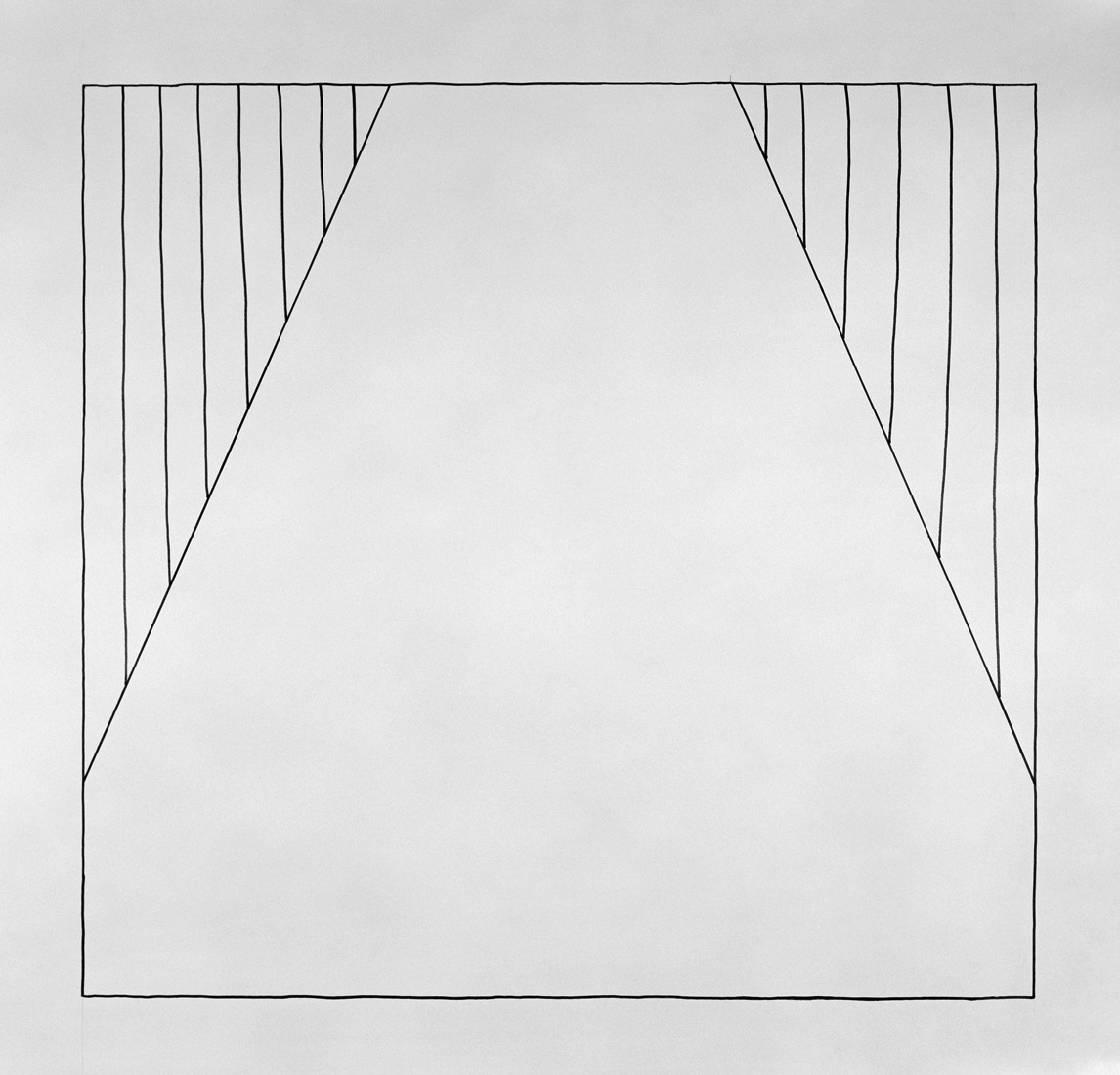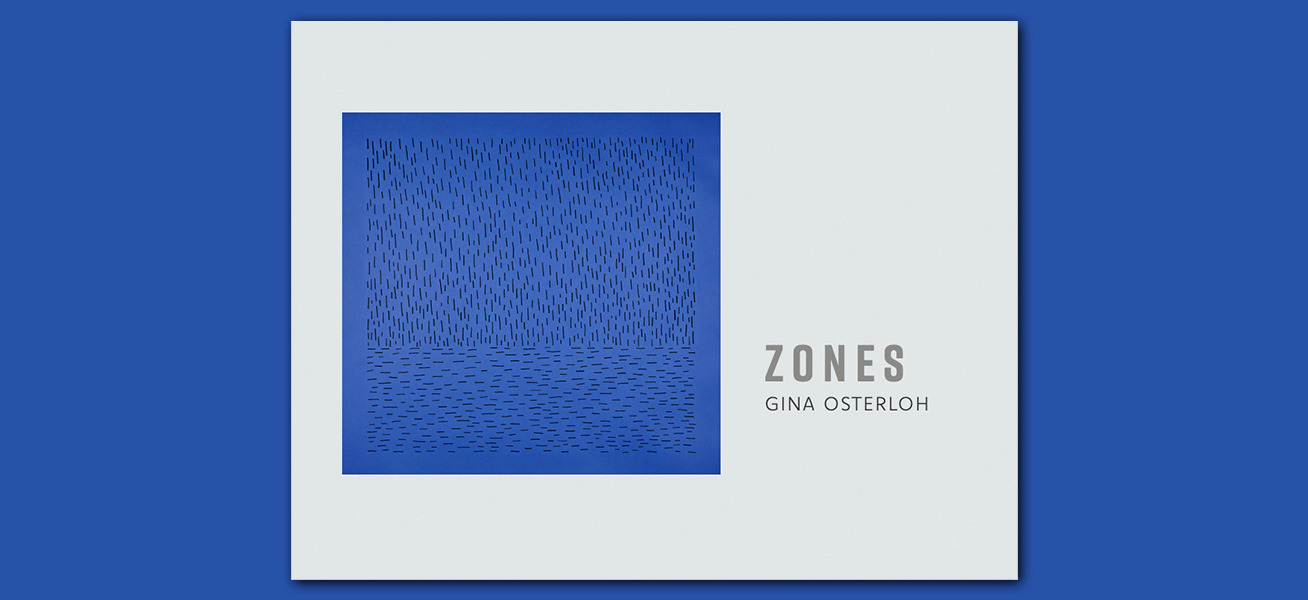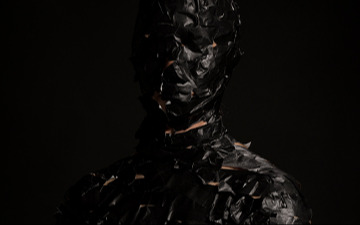
Zones
Gina Osterloh
Silverlens, Manila
Installation Views
About
SILVERLENS is pleased to present its 3rd solo show with conceptual artist Gina Osterloh. Osterloh's previous work is most noted for subverting the conventions of portraiture--refusing to allow her figures to be easily identified--and for exploring spaces such as walls and floors. In this new exhibition ZONES, the artist carries her trademark anti-portrait strategies into the realm of abstract schemata. Dots, dashes, circles, lines, and comma shapes appear inside and outside delineated frameworks that tease the viewer with the possibility of meaning but refuse to indicate precisely how to view them. According to Osterloh, these photographs of drawings "are visual digests of symbols that have appeared in my work over the past decade": skin, hair, orifices, rooms, hallways. As with her early photo tableau works, the body and its surrounding space operate as both sites of refusal and portals to the unknown. Through this new series of photographs, Osterloh continues to explore the presence and absence of familiar identity markers our culture has trained us to recognize.
What follows is an interview conducted by email between experimental writer Janis Butler Holm and multimedia artist Gina Osterloh. The occasion is Osterloh's show ZONES, currently on display at Silverlens Galleries in Manila.
HOLM:
Much of your past work has subverted the conventions of portraiture—with masked or otherwise hidden faces, figures that seem to blend into their backgrounds, flat cardboard cut-outs without distinguishing features, etc. What has motivated you to reject historical traditions of identity and subject as found in mainstream representations of personhood? I’m thinking here of facial focus, centered and foregrounded bodies, directed lighting, and so forth.
OSTERLOH:
Your question brings me back to the racialization, othering, and alienation I experienced growing up mixed-race in Ohio. From grade school through high school, I had no idea what was going on--as a youngster, you simply register experiences. There was always the question “What are you?" or "Where are you from?” I would respond with “My mother is from the Philippines, and my father is fifth-generation German-American.” As the identity questions persisted even after I moved to California, I found I wanted to respond with a “blank”--sometimes in the form of an awkward pause.
I became conscious that the person asking the question felt the need to situate me in terms of race, ethnicity, gender, sexuality--all of these categories--in order to feel “fixed” or stable in her/his own identity by establishing our relative positions in a social hierarchy.
Though I picked up a 35mm film camera when I was an undergrad at DePaul University, it really wasn’t until grad school at UC Irvine that I realized photography is the perfect medium for addressing what social theorists call “interpellation”--this call-and-response relationship between larger social constructs and my body, my identity.
Traditional portraiture sets up a similar relationship between viewers and the subject in a photograph. When viewers look at a portrait, they expect to see a face--a socially learned primary marker of identity--that can in turn “locate” their own positions in the world. The masked or hidden faces in my earlier work--and the flat cardboard cut-outs without facial features--were an attempt to interrupt this viewing dynamic. I wanted to present bodies that refuse to be named.
HOLM:
Though you have worked in a variety of media (video, photography, drawing, performance), it is possible to trace a movement from figure to abstraction, such that viewers have fewer and fewer overt clues as to how to interpret your work. This new show, for example, is a series of photographs of drawings in which dots, dashes, circles, lines, and comma shapes appear inside and outside delineated frameworks. How is this work continuous with your previous work? How is it different?
OSTERLOH:
Concisely put, the drawings are visual digests of symbols that have appeared in my work over the past decade: the room, the void, the body, the skin, the orifice. They are abstractions in the sense of having been abstracted from more pictorial versions of these things.
But those who are familiar with my earlier pieces might also choose to see these drawings as conceptual abstractions, as abstract images that both embody and trigger the processes involved in identity formation or--as is more likely in my work--in the cancellation of signifiers that inform notions of identity. These new pieces evoke some of my earlier strategies for thwarting identification: camouflage, pattern repetition, the absence of identity markers that tell the viewer how to read the work. For those who have the larger context, it will be clear that questions of perception, particularly of self and other, continue to drive my projects.
Yet these new pieces offer the viewer an even greater interpretive freedom than I've offered before--perhaps to an uncomfortable degree.
HOLM:
Some of the drawings suggest room-like structures very similar to those in your earlier photographs. How did you develop the frames and patterns in this new work? Why did you choose to show photographs of the drawings instead of the drawings themselves?
OSTERLOH:
From my large-scale photo tableau work to my photographs with walls and floors to the images included in ZONES, everything has begun with drawing in sketchbooks. For ZONES I transferred selections from my sketches to larger drawings on photo backdrop paper, which I then photographed with large-format film. Why did I make photographs of the drawings? In my work, photography has always been a stand-in, a reminder, of the formative constructs we are born into--language, gesture, posture, identity--the visible and invisible frameworks that continually shape us.
For the project that yielded pieces for this show, I chose to compress many of the visual metaphors crucial to my work (especially hair, rooms, orifices) into schemata of uniform dimensions, such that I could imply conceptual movement, symbols in flux, from piece to piece. For me, each image is a portal, a passageway to the next--suggesting, I hope, the fluidity of our perceptive processes and associations.
There’s a purposeful order to the sequence of photographs I'm sharing in the Silverlens Galleries. For this show, I'm particularly interested in the spaces women occupy, socially and privately.
My hope is that visitors to the gallery will take the time to sit with each image and to examine it closely. The patterns in some of the photographs involve hundreds of tiny dots. These can’t be seen from afar and won't manifest in a tiny cell-phone image. For all the ZONES pieces, scale matters.
HOLM:
Having viewed more of your work than is represented in the Silverlens exhibit, I find that I'm tempted to see the many delineated frames and their contents as generally representing cultural/personal binaries such as public/private, external/internal, etc.
Then, as I try to account for the pieces where traditional framing is not present, as is the case with many of the photographs in ZONES, I realize that your latest work plays with--no--insists on--a spectrum of possible patterns that may or may not be tidily divided or enclosed. Like a face, a frame can play a large part in identifying both what an object is supposed to be and how we are to respond to it.
Or have I carried my interpretive freedom too far?
OSTERLOH:
I very much like what you're saying here.
HOLM:
How did you decide on the colors of the background paper--blue, ocher, gray?
OSTERLOH:
My relationship to color choices has always been intuitive. (I see intuition as a form of knowledge that we hold in our bodies, often without its surfacing in verbal language.) At the beginning of my project, I simply loved how the black lines interact with backdrop blue and gray. The third color was a tougher decision. I wanted something that would contrast with the blue, so I chose a warm color, a yellow/ocher.
HOLM:
Which artists have influenced this most recent work? What features do these photos share with other contemporary art? In what ways do they differ?
OSTERLOH:
Of all my work, ZONES is the most "graphic." All the black lines have been drawn with the same mass-produced black marker. Two colleagues, Suzanne Silver and Todd Slaughter (who teach with me at Ohio State University), were quick to mention similarities to the work of Jim Nutt, who founded the Chicago Imagists art movement. I'm excited by this comparison–with Nutt’s odd, surreal, beyond-funky ways of rendering figures and space. Some folks have mentioned Pop artists such as Keith Haring. (I’ve been a Keith Haring fan since I was in high school.) But whereas Haring's kinetic marks and shapes seem to jump off the wall, ZONES is more meditative and quiet.
I have also been inspired by painters such as Agnes Martin, Mary Heilmann, and Rebecca Morse, and by other artists who seek to disrupt binary notions of identity and false archetypes, such as Suné Woods, Antonia Wright, and Nao Bustamante.
HOLM:
On a more personal note, do you have a definable work pattern? That is, are there specific steps to your creative process? For example, do you have pre-work "rituals," things you do to put yourself in working mode?
OSTERLOH:
Typically, I need quiet--I can’t listen to music when I’m working. But during my work on this project, I sometimes listened to Buddhist talks on Dharma Seed, an online teaching site. I’m not a Buddhist, but talks by Jack Kornfield that address connections between psychology, being, personhood, and sense of self kept me very present for each mark I made. Before and during my drawing on the photo backdrop paper, I sat still. When I created the line work, I felt a very crisp and clear connection between my hand and my breath. After completing a few drawings, I rolled them up and took them to a lighting studio, where I photographed them. I then waited for the contact sheets to come back from the photo lab. Only after a set of contact sheets was returned and carefully inspected did I repeat the process.
HOLM:
If you were asked to describe your work in just a few words, what would you say?
OSTERLOH:
Pressing against.
Gina Osterloh’s (b. 1973, Texas, USA) photography, film, and performance based art work depicts mark-making and her own body traversing, tracing, and puncturing photographic space in a quest to interrogate the boundaries of a body and expand notions of identity. Osterloh’s printed photographs depict large scale photo tableaux environments as well as drawing on photo backdrop paper, that expand our understanding of portraiture and what photography can be. Symbolic themes and formal elements such as the void, orifice, and the grid, in addition to a heightened awareness of color and repetitive pattern appear throughout Osterloh’s oeuvre. Osterloh cites her experience of growing up mixed-race in Ohio as a set of formative experiences that led her to photography and larger questions of how a viewer perceives difference.
Solo exhibitions include Gina Osterloh at Higher Pictures; Slice, Strike, Make an X, Prick! at François Ghebaly Gallery; Nothing to See Here There Never Was at Silverlens Gallery; Group Dynamic at Los Angeles Contemporary Exhibitions (LACE), and Anonymous Front at Yerba Buena Center for the Arts. Group exhibitions include Multiply, Identify, Her at the International Center of Photography in New York City, Ours is a City of Writers at the Barnsdall Los Angeles Municipal Art Gallery; Energy Charge: Connecting to Ana Mendieta at ASU Museum, Demolition Women curated by Commonwealth & Council at Chapman University and Fragments of the Unknowable Whole Urban Arts Space OSU. Her work has been reviewed in The New Yorker, Art in America, The Brooklyn Rail, Contemporary Art Daily, Hyphen Magazine, Art Asia Pacific, Asian Art News, Art Papers, Artforum Critics Pick, Art Practical, and KCET Artbound Los Angeles. Awards include a Fulbright in the Philippines, a Woodstock Center of Photography residency, and a Create Cultivate Grant with the LA County Arts Commission and LACE. Gina Osterloh is an Assistant Professor in the Department of Art at The Ohio State University
Janis Butler Holm is an experimental writer based in the United States. She has served as Associate Editor for Wide Angle, the film journal. Her prose, poems, and performance pieces have appeared in small-press, national, and international magazines. Her plays have been produced in the U.S., Canada, and the U.K.
Works
